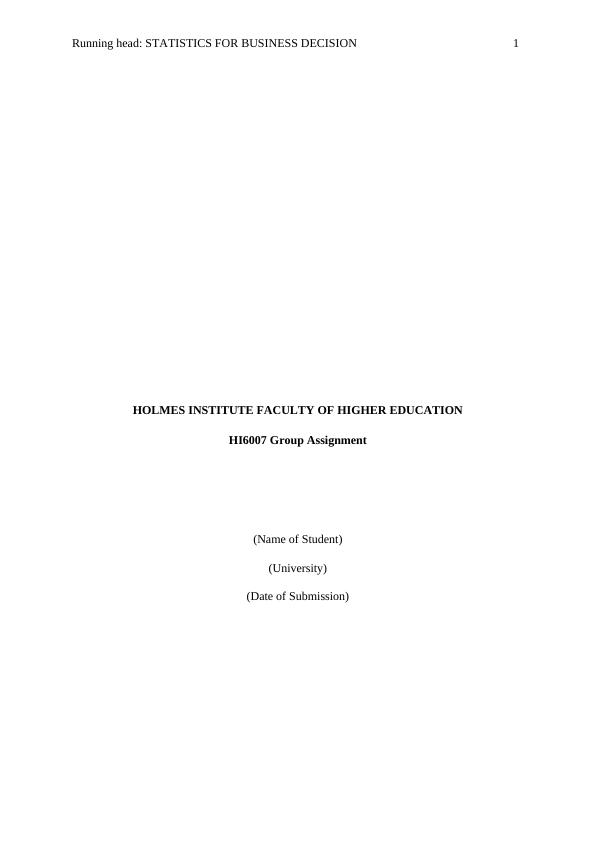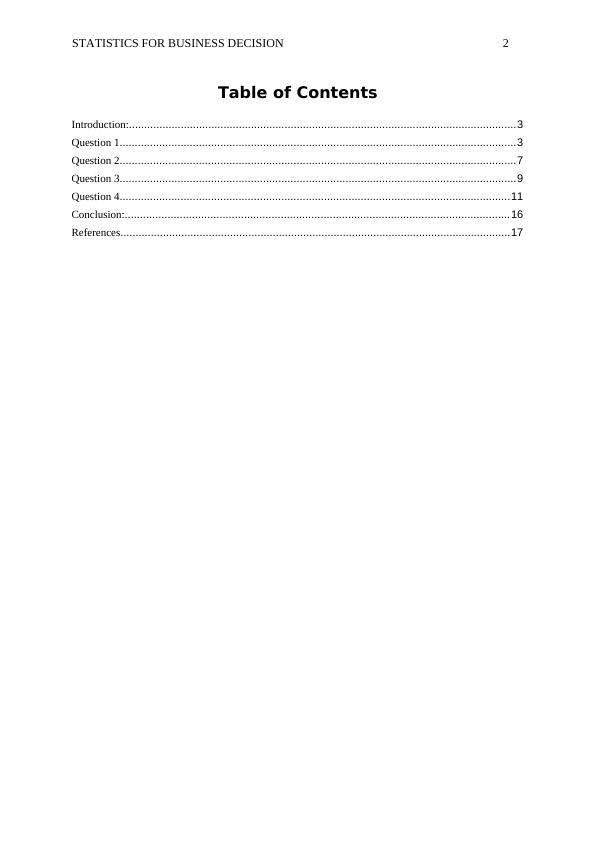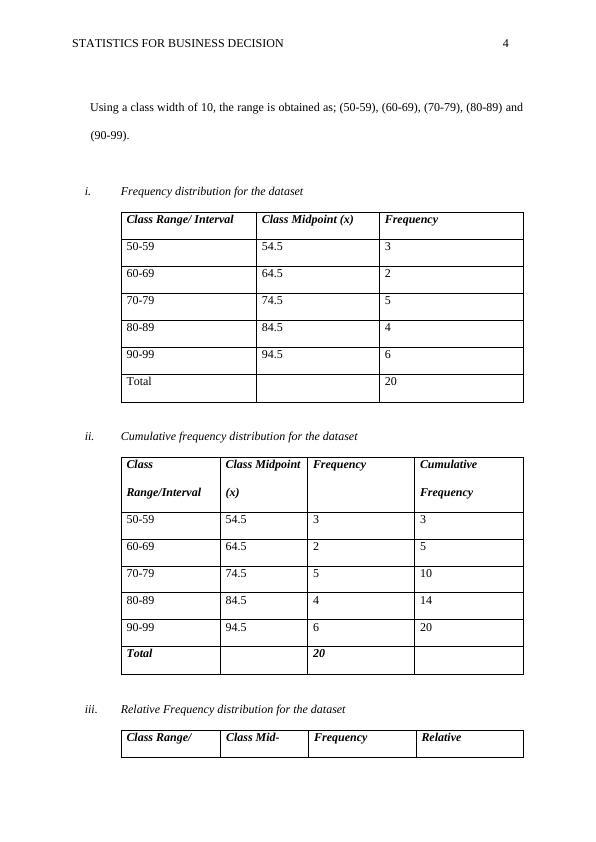Statistics for Business Decision
Added on 2023-06-04
17 Pages2515 Words396 Views
End of preview
Want to access all the pages? Upload your documents or become a member.
Statistics for Business Decisions - Desklib
|12
|1603
|290
Problems of Statistics - Desklib
|9
|1345
|115
Methods of Survey and Sampling for Study on Students
|12
|2046
|262
Discrete Mathematics Assignment Sample
|12
|1207
|167
Statistics - Frequency Distribution, Linear Regression, ANOVA, Multiple Regression
|10
|1171
|154
Statistics Assignment Solution - Doc
|11
|1458
|98




